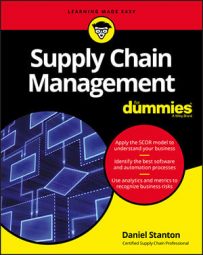One way for supply chain partners to help each other is through a process called collaborative planning, forecasting, and replenishment (CPFR). In the CPFR process, companies share information about how much they expect their customers to buy and how much inventory they have on hand so that they can help each other achieve high service levels with lower amounts of inventory. You can download a very good overview of CPFR from GS-1.
CPFR is a registered trademark of GS-1, a not-for-profit association that maintains supply chain communication standards.

